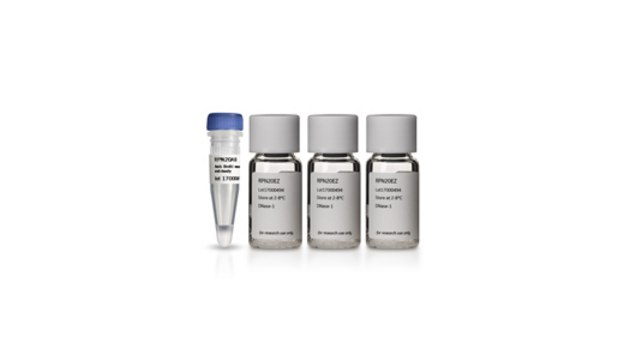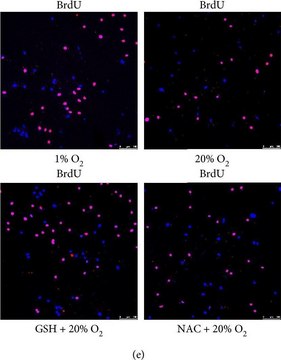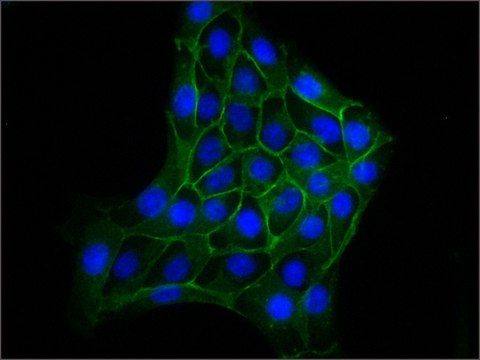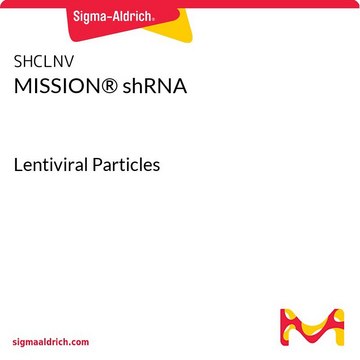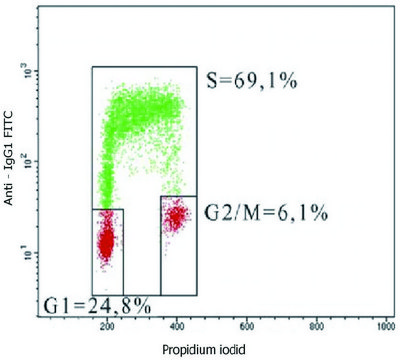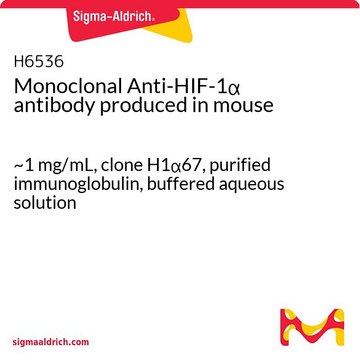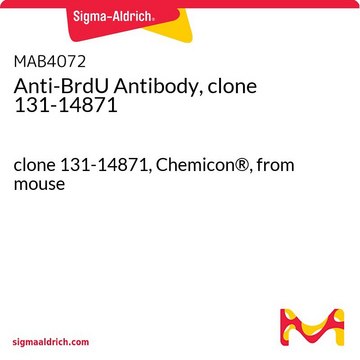MAB3222
Anti-BrdU Antibody, clone IIB5
clone IIB5, Chemicon®, from mouse
Synonym(s):
BrdU
About This Item
Recommended Products
biological source
mouse
Quality Level
antibody form
purified immunoglobulin
antibody product type
primary antibodies
clone
IIB5, monoclonal
species reactivity (predicted by homology)
all
manufacturer/tradename
Chemicon®
technique(s)
flow cytometry: suitable
immunocytochemistry: suitable
immunohistochemistry: suitable (paraffin)
isotype
IgG1
shipped in
wet ice
target post-translational modification
unmodified
General description
Specificity
Immunogen
Application
http://www.protocol-online.org/prot/Immunology/Immunohistochemistry. For examples of various protocols.
Flow Cytometry: 1:100-1:200; acid methanol treatment required.
Optimal working dilutions must be determined by the end user.
In order for the antibody to work a pretreatment to expose DNA will be needed (1 mg/mL of pepsin in 0.01 M HCL 30 min at r/t)
Epigenetics & Nuclear Function
Cell Cycle, DNA Replication & Repair
Physical form
Storage and Stability
Analysis Note
After incorporation of BrdU, all DNA containing species
Other Notes
Legal Information
Disclaimer
Not finding the right product?
Try our Product Selector Tool.
Storage Class Code
12 - Non Combustible Liquids
WGK
WGK 2
Flash Point(F)
Not applicable
Flash Point(C)
Not applicable
Certificates of Analysis (COA)
Search for Certificates of Analysis (COA) by entering the products Lot/Batch Number. Lot and Batch Numbers can be found on a product’s label following the words ‘Lot’ or ‘Batch’.
Already Own This Product?
Find documentation for the products that you have recently purchased in the Document Library.
Our team of scientists has experience in all areas of research including Life Science, Material Science, Chemical Synthesis, Chromatography, Analytical and many others.
Contact Technical Service